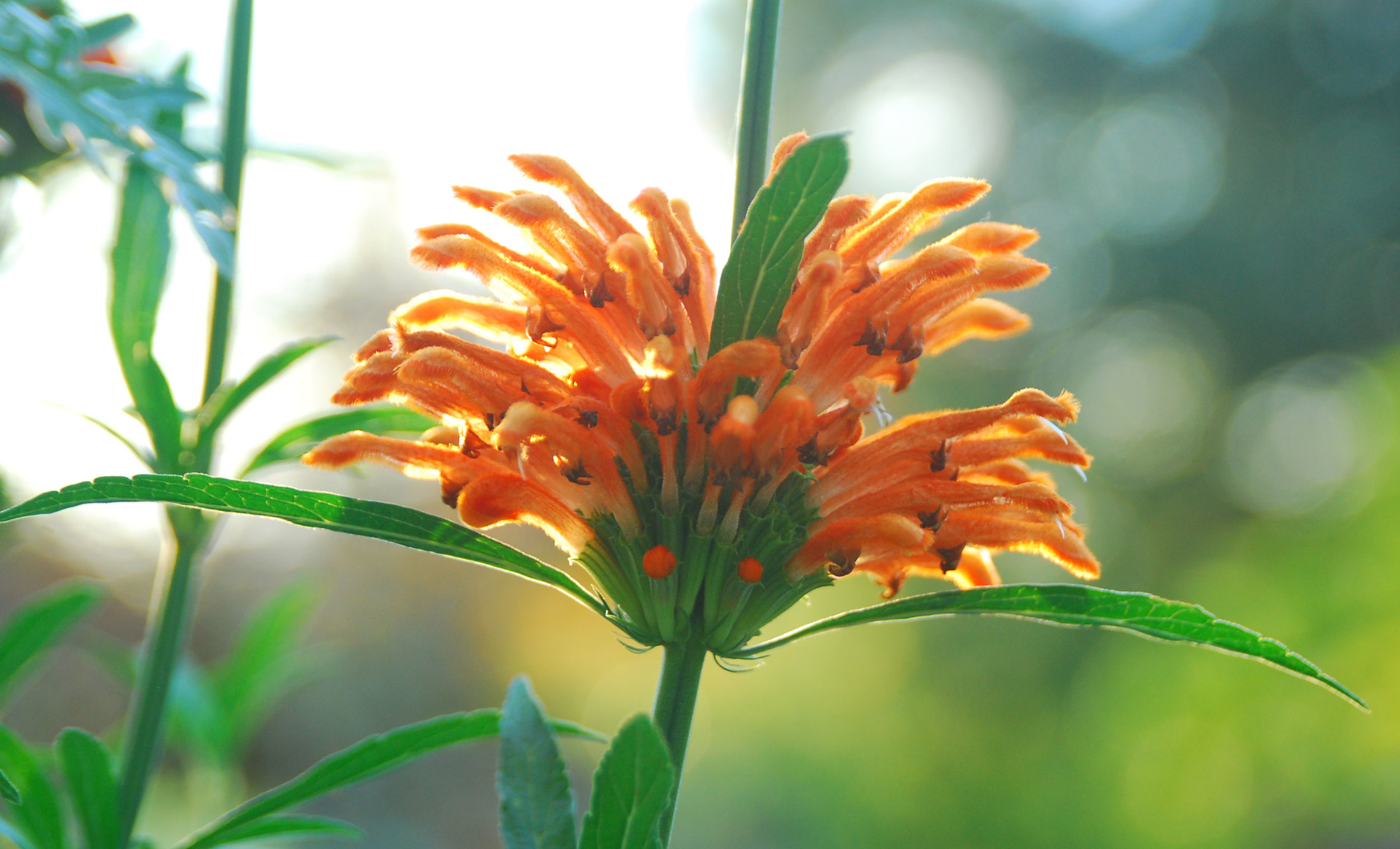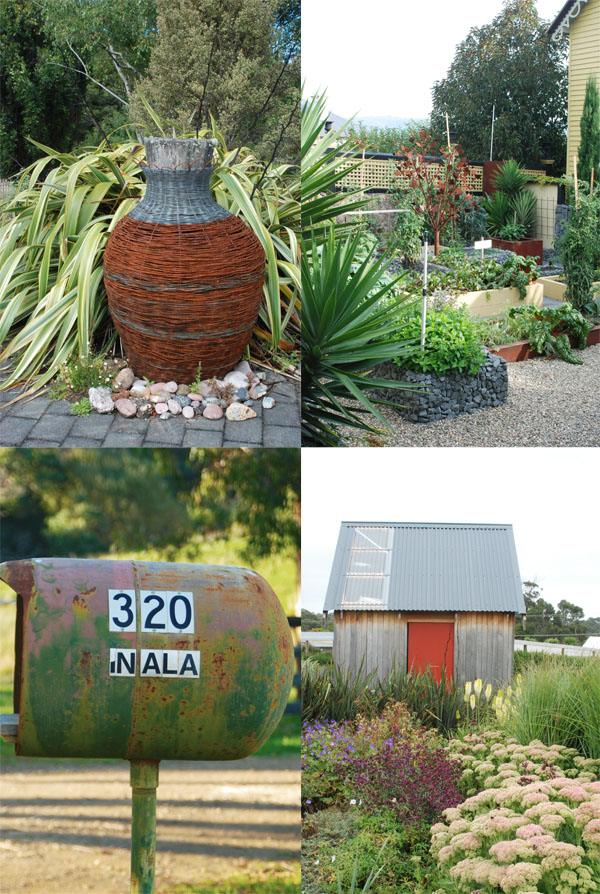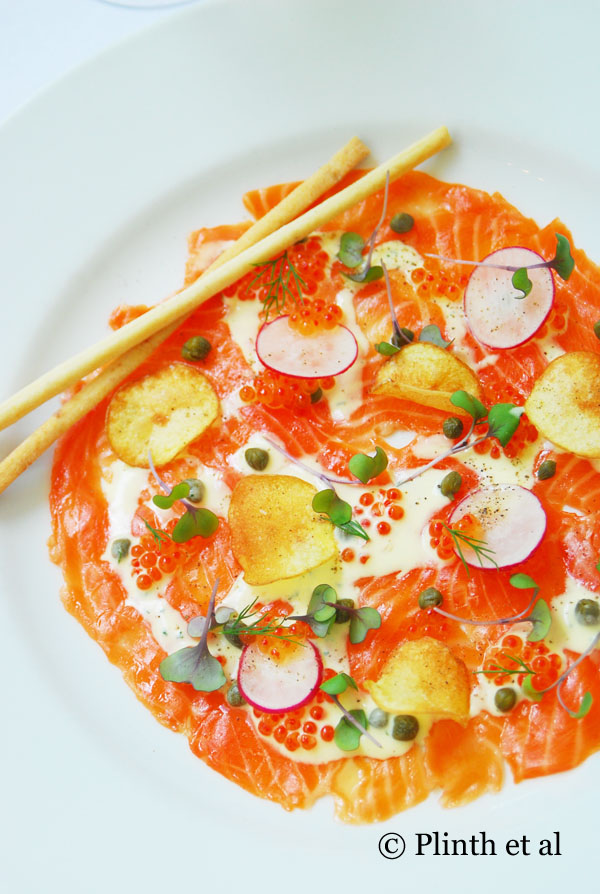Dear Jimmy: Ode to Orange
Dear Jimmy: As I leaf through the spring bulb catalogues and mark the daffodil and tulip varieties of interest, I notice that I am finding the orange ones appealing (apart from white and black). Perhaps orange is such an unexpected color in spring - its warm piquancy in sharp contrast to the cooler vernal tones. It never disappoints for it seems a simmering preclude to the full volume of summer. The color appears to debut with quietude and grow vulnerable like a flickering flame that leaps into a conflagration in summer. I always thought how fun the concept would be to set a border to orange, not necessarily a monochromatic one, but one that begins with geums, Tulipa 'Prinses Irene' and Euphorbia polychroma, swells up with Digitalis ferruginea, Eschscholtzia calfornica, and Stipa gigantea, and tapering off to the last Kniphofia, Leonotis leonurus and rosehips.
It is hard to understand why people harbor deep-seated prejudices towards orange - either orange or yellow is shunned while other colors are more or less welcome. White can be cold, pink insipid, and blue wishy washy if placement and tone is not considered. It is hard to find fault with orange. No matter how red or yellow the color orange registers on the spectral scale, it never lets go its sunny disposition. I cannot help smile in orange's presence - and you can begin to see why Indians love the color in their jubilant celebrations - the marigold garlands, the billowing saris, and spices and seasonings. Even the Buddhist monks in Thailand and southeast Asia don orange vestments, a more lively foil to the ascetic white garments of their Japanese contemporaries. Unfortunately I cannot wear orange for my yellow skin looks sallow with it. Individuals with olive or even fair complexions look flattering in orange. However, I have no problems inviting orange in the garden - under sunny or overcast skies, it is a cheerful color. Sometimes our inclinations towards orange or other colors develop from our emotive reactions to the surrounding environments.
Australians are inordinately fond of brown, copper, and rust in the garden - perhaps they are responding naturally to their landscapes brushed with ochres and vermilions from the blazing sun. And their country itself is an incendiary one if you discount the tropical rainforests of Queensland and karri groves of Western Australia. Eucalyptus, which constitute much of their forests, are essentially matchsticks, fueled with combustable oils in leaves and branches that leave the trees a smoldering mess after a wildfire. Nonetheless the Australian embrace of earthy colors lends itself well to the rusticity of gardens. Gates welded of iron, barbed wire recycled into sculptures, and even oil barrels re-purposed into mailboxes. These ornaments would appear discordant in an English landscape, which is replete with green. Perhaps on a shingle beach like the late Derek Jarman's iconic Dungeness Beach garden would distressed agricultural or industrial implements be appropriate.
Where other colors look dispiritedly bleached or withered under the intense Australian sun, orange matches the sun's ferocity with its brilliance. As the sun weakens its glare, orange seems to glow more intensely than it did in midday. I remember walking through the Bay of Fires and Freycinet National Park, Tasmania, Australia during early evening when the lichen encrusted rocks literally became animated with orange. The color matched the crystal clarity of the blue skies, the angular contours of the rocks, and the blinding purity of the white sands. I felt swept up in a dreamscape only possible in a surrealist painting. Without orange, the coastal landscape loses its brilliance that is distinctly Australian. All these hikes served to heighten my appreciation for orange in all guises.
Sometimes the appeal of orange finally does not become apparent until one cooks and feasts with sensitivity for color on the plate. A memorable appetizer was a salmon carpaccio spangled with salmon roe, sliced radishes, and micro-shoots with a drizzle of aioli. Two breadsticks placed perpendicular to the plate broke the circular theme. What made this dish riveting was the color, that same saturated orange I saw on those coastal rocks, the Rothko paintings, and the tulips. I am sure that you would understand from living in Spain where oranges are unavoidable. May orange embolden your health!
~Eric











